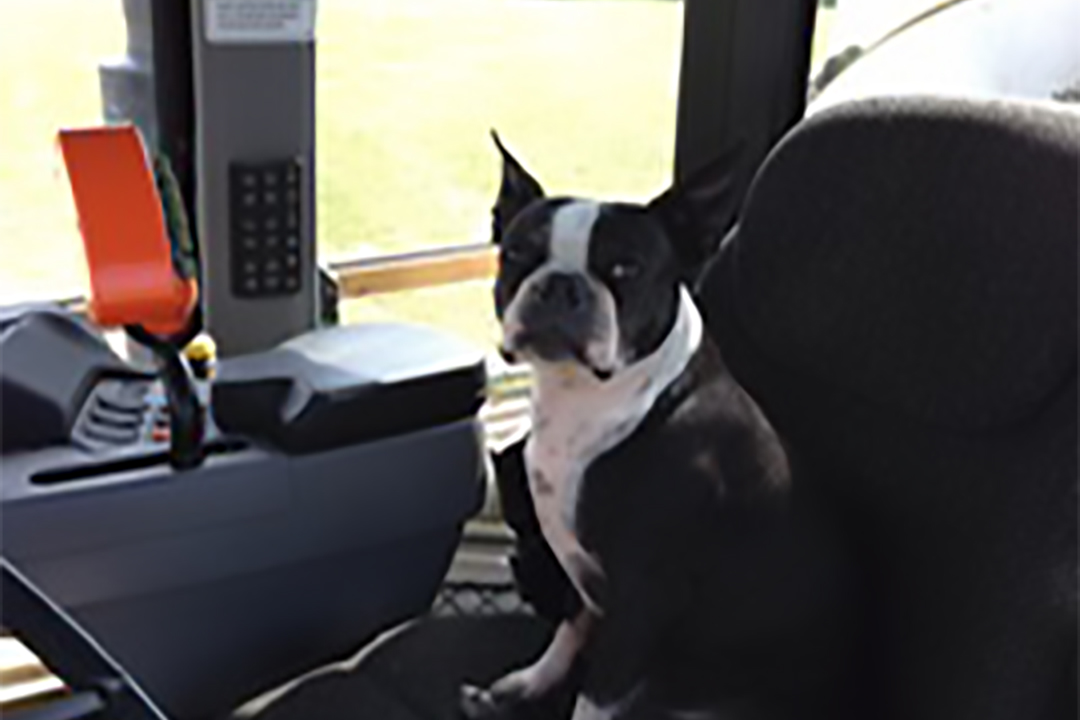
Advanced treatment for canine cancer
For a pet owner, the worst news in the world is hearing that your furry best friend has cancer.
By Jordyn DeWaltThat was exactly the case for dog owners Lisa and Chris.
"It was the worst day ever," says Lisa, recounting the day they found out their 12-year-old Boston terrier Oakley had a nasal tumour.
"We'd go to bed at night and he'd be lying there and gasping for air; he wouldn't sleep because he wasn't able to breathe," says Chris. "He was so fatigued because he wasn't sleeping that he would just be standing there and would fall over because he was so tired."
While cancer of any type is hard to treat, nasal tumours cause added grief for veterinary oncologists because of all the important structures nearby, particularly the eyes and the brain. They're perhaps the most important tissues to consider because the side effects of radiation can be life altering.
Too much radiation to the eyes can cause long-term cataracts or blindness, and too much to the brain can cause seizures and other neurological changes. To avoid the side effects but still treat this small area, oncologists need to use a very targeted radiation treatment — and that's where the highly-focused beams and on-board imaging capabilities of newer linear accelerators come in.
Stereotactic radiation therapy (SRT) is a type of radiation therapy that uses highly-focused beams and on-board imaging – and the entire dose of radiation is delivered in one to five doses, usually three in veterinary medicine. SRT is delivered over a period of days instead of the weeks needed for conventional radiation therapy, thus reducing the amount of time patients need to be in the hospital and under general anesthetic.
Because the anesthetic episodes are reduced from approximately 20 to only three, treatment can now be made available to those patients unable to handle many repeated anesthetic episodes. In addition, out-of-town owners are able to reduce their stay in Saskatoon from a month to less than a week.
"You are giving a curative dose of radiation but only in three fractions," explains Dr. Monique Mayer, a board-certified veterinary radiation oncologist at the Western College of Veterinary Medicine (WCVM). "New technology allows us to really precisely deliver the dose of radiation and adjust the fields to the patient position in real time. We can give it so accurately that we are avoiding the normal tissues, so we can give those high doses."
That means the immediate side effects are also greatly reduced for the patients that had previously experienced severe effects when conventional radiation therapy was used to treat nasal tumours.
"We always accepted with conventional dose [radiation therapy] that nasal tumour patients were probably the worst patients for side effects because their whole face and a good portion of their mouth was affected," explains Mayer. "That is the biggest difference I think for the patient – less side effects or very limited side effects [with SRT]."
Researchers at the WCVM are now investigating how the outcome of SRT compares with conventional radiation therapy for nasal tumours. Since canine nasal tumours are most commonly treated with radiation alone, the scientists can readily compare the results and side effects of SRT to those of the older treatment methods.
If SRT is shown to provide at least the same level of tumour control with comparable or decreased side effects to healthy tissue, it may become the new treatment of choice for many types of cancer.
When Lisa and Chris look back, they're convinced that SRT was the best option for treating Oakley's nasal tumour. Thanks to the dedicated team at the WCVM Veterinary Medical Centre, their spunky combine-riding, shoe-stealing, affectionate Boston is back to his old ways of playing with his sister Nala.
"If we weren't going to treat with radiation, [the clinicians at the VMC] said we should say our goodbyes," recalls Lisa. "Seeing him now, he is doing so well! We totally did the right thing, he wasn't ready to go."
Jordyn DeWalt is a fourth-year veterinary student who was part of the WCVM's Undergraduate Summer Research and Leadership program in 2016. Jordyn's article is part of a series of stories written by WCVM summer research students.
